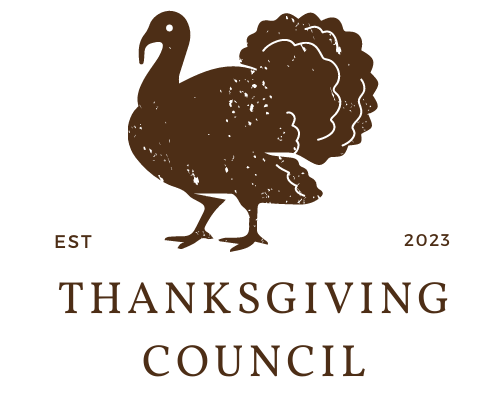You know that moment on Thanksgiving? The turkey’s roasting, the pies are cooling or maybe being sneak-sampled, and there’s that familiar rumble of announcers and crowd noise drifting from the living room. It feels as essential as the cranberry sauce, does it not? For me, it’s the comforting background hum to a day steeped in family and food. But have you ever stopped to wonder how football became so completely woven into the fabric of American Thanksgiving? It was not exactly an accident. Believe it or not, this whole Thanksgiving football tradition started way back, like your great-grandparents way back, in 1876. College teams were the pioneers, scheduling games on the holiday. Picture it: communities starved for entertainment gathering together. Folks would head out in the crisp afternoon air, cheer on the local lads, and then hustle home just in time for the big feast. It filled that awkward gap between the morning hustle and the evening gorge-fest perfectly. Simple, communal, and just plain fun.
Fast forward a bit, and the young NFL saw a golden opportunity. They dabbled with Thanksgiving Day games starting in 1920, but the real game-changer? That was 1934, when the Detroit Lions, frankly struggling to get butts in seats, decided to go all-in. Owner George Richards said, “Hey, everyone’s home and probably bored before dinner… let’s give them a show!” Genius, right? His gamble paid off huge. Suddenly, Detroit had a packed stadium, and a brand new tradition was kicking off. Here is the real magic of Thanksgiving football, though. It works on so many levels. For the sports nuts like my cousin Dave, who wears his lucky jersey over his sweater, it is prime-time entertainment often featuring those marquee NFL matchups we all argue about. For Aunt Susan, who couldn’t care less about a first down, it is pleasant background noise, something to glance at while prepping sweet potatoes. And for the whole family? It is this incredible shared focal point. The perfect blend of Thanksgiving tradition and shared cultural experience, football provides a unifying backdrop for family gatherings without demanding constant interaction. It brings us together without forcing us to interact, which, let us be honest, can get intense after the third helping of stuffing. You can drift in and out, chat during commercials or timeouts, and never feel like you are missing the point.

Then television exploded everything. When NBC started beaming the Lions game nationwide in 1956? Wow. Millions of us, from coast to coast, were suddenly sharing the exact same moment. It became appointment television. Even families who were not diehard football fans found themselves drawn in. It was this massive, shared cultural heartbeat pulsing through living rooms everywhere. The timing? Chef’s kiss. Games kick off just as the parades wrap up, rolling right through the afternoon cooking marathon. Need to baste the turkey? Go for it. Cousin Mike telling a long story? You can tune in and out of the game without losing the thread. The natural rhythm of football, with its breaks and pauses, somehow perfectly accommodates the beautiful chaos of a family holiday. Sure, some folks grumble that football hijacks the holiday, replacing meaningful connection with mindless noise. But I think they miss the point. For most of us, it is not the sole focus. It is the framework, the comfortable rhythm that allows those conversations and connections to happen more naturally. It fills the quiet moments without demanding silence. The sheer popularity created this powerful cycle. Networks pay top dollar for those NFL Thanksgiving games slots because they know we are all watching.
The league, knowing millions of casual eyes are tuned in, stacks the schedule with those must-see marquee matchups. This investment keeps the tradition strong and the entertainment value high, year after year.These days, I notice something different about our Thanksgiving football ritual. While the living room TV still blares the main game, half the family has their phones out checking fantasy stats or streaming alternate camera angles. My teenage nephews actually watch the game through their betting apps – which would horrify my Grandpa if he understood how it worked. *As viewing habits evolve, the NFL has adapted brilliantly, offering multiple broadcast options and mobile experiences that keep younger generations engaged.* The tradition isn’t dying; it’s just getting more personalized. Even with these changes, that shared moment when everyone collectively groans at a missed field goal or erupts at a touchdown? That magic still happens. Looking ahead, streaming and phones are changing how we watch, fragmenting that shared living room moment a bit. But honestly? The core appeal feels unshakeable. It fulfills a genuine need in the messy, wonderful reality of American family life. So, football did not just stumble onto our Thanksgiving table. It earned its place, plate by plate, touchdown by touchdown, over decades. It provides entertainment, creates that irreplaceable shared experience, and structures the day in a way that just works.
References
Pro Football Hall of Fame. (2023). History of Thanksgiving Day football games. https://www.profootballhof.com/thanksgiving-tradition
Sporting News. (2022). Evolution of NFL Thanksgiving games and television coverage. Sporting News Media.
http://www.sportingnews.com/nfl/news
Journal of American Culture. (2023). Sports traditions and national holiday celebrations. Wiley Online Library.
http://onlinelibrary.wiley.com/journal/1542734x
Nielsen Media Research. (2023). Thanksgiving Day television viewership patterns and demographics. Nielsen Holdings.
http://www.nielsen.com/insights/2023/broadcast-programming-sets-the-table-for-thanksgiving/

